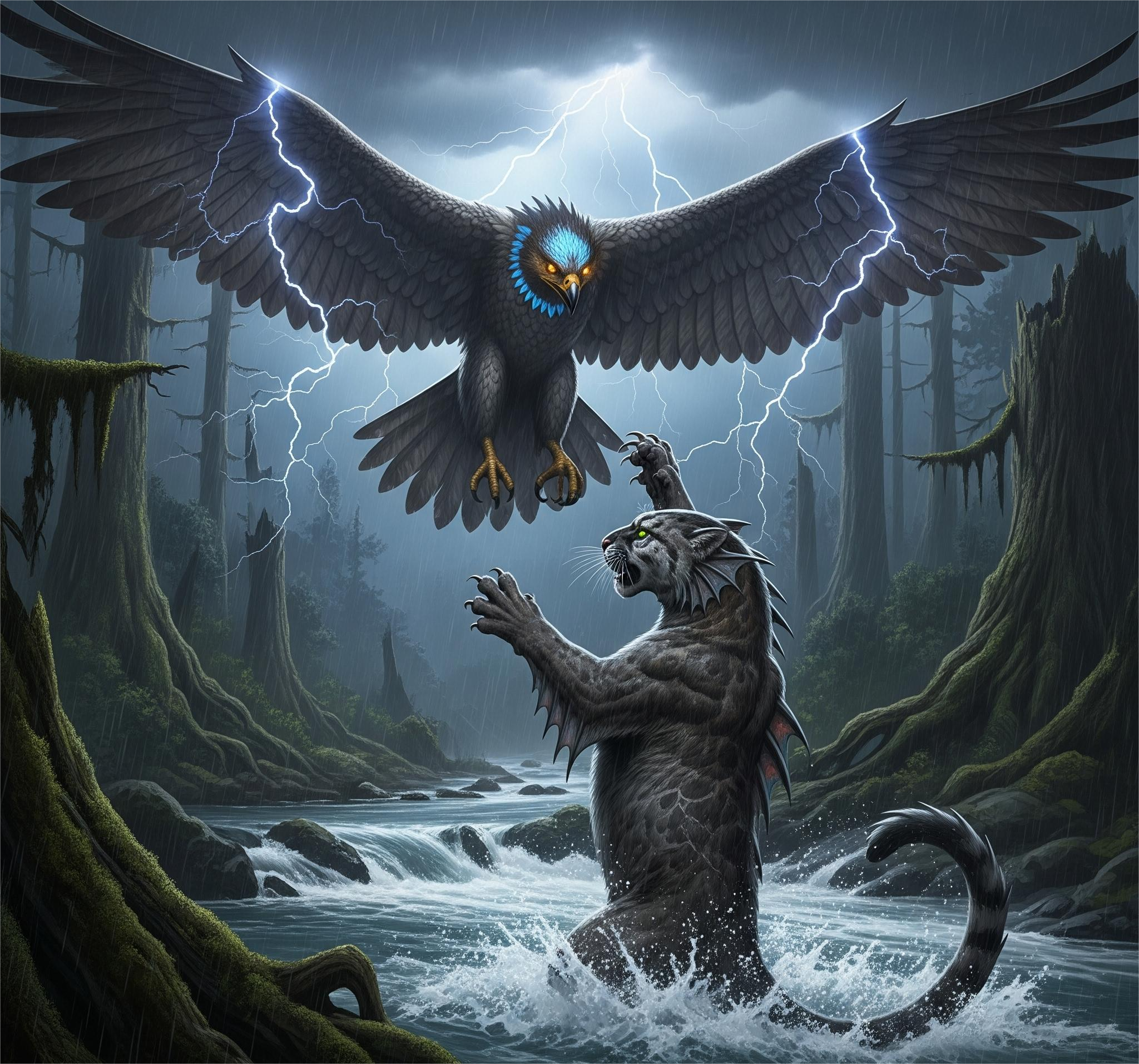In the rich mythologies of various Native American tribes, few tales are as electrifying and symbolic as the epic conflict between two powerful spirits: the Thunderbird and the Water Panther. These two forces—one of the sky, the other of the deep—embody the cosmic balance of order and chaos, storm and stillness, sky and water.
Their battle isn’t just a fight between mythical beasts—it’s a metaphor for the tension between the natural forces that shape the world.
Who Is the Thunderbird?
The Thunderbird is one of the most revered spirit beings in Native American mythology, particularly among tribes of the Plains, Great Lakes, and Pacific Northwest.
Described as a massive bird with wings that create thunder and eyes that shoot lightning.
Associated with storms, rain, and divine justice.
A protector of humanity, often seen as a celestial enforcer who punishes evil spirits and maintains order.
In many traditions, the Thunderbird is considered a guardian of the upper world and a powerful totem for warriors and chiefs.
Who Is the Water Panther?
The Water Panther (known by different names such as Mishipeshu, Underwater Panther, or Namakubi) is a mythical aquatic creature found primarily in Algonquian and Great Lakes tribal traditions.
Often depicted as a feline-like creature with scales, horns, and a long serpentine tail.
Lives in deep lakes, rivers, and beneath the earth, guarding the waters and hidden knowledge.
Associated with danger, wealth (copper), mystery, and chaos.
The Water Panther represents the underworld, the untamed power of water, and spiritual depth.
The Mythical Conflict: Sky vs. Depth
In several Indigenous traditions, the Thunderbird and Water Panther are ancient enemies, locked in a cosmic struggle that explains the natural phenomena of storms, floods, and lightning strikes.
According to the Legend:
The Thunderbird controls the skies, bringing storms, rain, and lightning.
The Water Panther controls the waters, stirring the depths and causing whirlpools, floods, or underwater quakes.
Their clashes shake the earth, with thunder and lightning above and crashing waves below.
This myth mirrors the seasonal cycle—especially spring, when storms rage and rivers flood, suggesting the two beings are battling once more.
Deeper Symbolism
This legendary rivalry isn’t just about weather—it’s a spiritual allegory:
The Thunderbird represents justice, order, purification, and often the intervention of the divine.
The Water Panther embodies chaos, hidden danger, transformation, and the mysteries of the subconscious or underworld.
Together, they illustrate the balance of power in the universe, where creation and destruction are in constant tension.
It’s also a moral tale: humans are caught between these forces, and balance must be maintained through ritual, respect for nature, and spiritual harmony.
Cultural Importance
Different tribes interpret this myth differently:
Ojibwe: The Water Panther (Mishipeshu) guards sacred copper and punishes those who take it unethically. The Thunderbird ensures respect for spiritual law.
Menominee: The Thunderbird is a guardian spirit who fights underwater monsters to protect the people.
Ho-Chunk (Winnebago): Stories emphasize the Thunderbird’s role in keeping the Water Panther’s powers in check to prevent floods or spiritual corruption.
These stories were passed down orally, often during seasonal ceremonies, vision quests, and storytelling circles.
Modern Echoes
Today, the conflict between the Thunderbird and the Water Panther continues to resonate in:
Art and totems: Especially in Great Lakes petroglyphs and Pacific Northwest carvings.
Environmental metaphors: The balance between earth’s forces, and the consequences of disrupting them.
Spiritual practices: Many Indigenous communities still honor these beings in dreams, rituals, and protective charms.
They remain potent symbols of both natural awe and spiritual duality.







